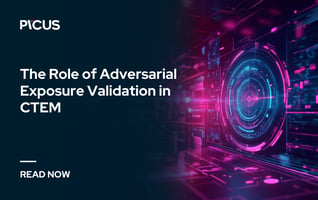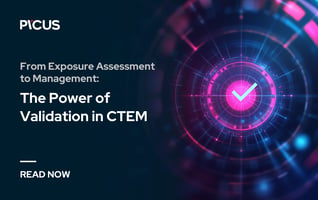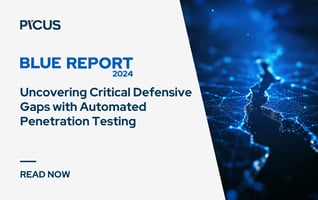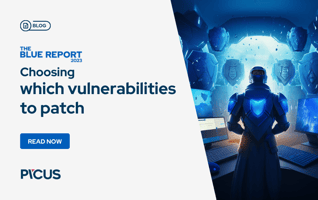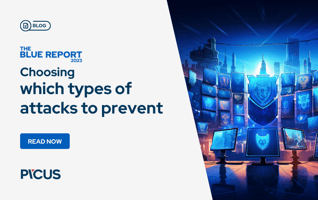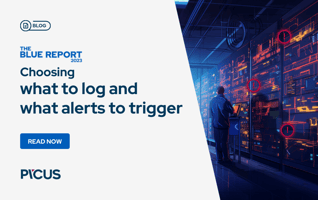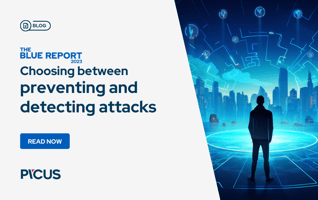As our reliance on digital systems grows, so does the complexity and sophistication of cyber threats. Since organizations aim to stay ahead of a potential breach, it becomes not only beneficial but highly essential to understand and address security exposures. If building a resilient cybersecurity posture is your goal, assessment and validation of exposures must be core parts of your exposure management strategy. This blog outlines how exposure assessment serves as the cornerstone of effective cybersecurity and why validation is indispensable in this process.
What is Exposure in Cybersecurity?
Exposure is the presence of any type of vulnerability, misconfiguration, or security gap in an organization's IT environment that may be exploited by any threat actor. These different types of exposures range from software vulnerabilities and missing patches to weak encryption and misconfigured security controls.
Think of exposures as the holes in your armor that can give room for unauthorized access, data breaches, or other types of cyberattacks. Proactively identifying and addressing these exposures is a major key to maintaining a robust security posture and minimizing the risk of successful attacks.
Understanding Exposure Assessment in Cybersecurity
Basically, exposure assessment in the cybersecurity domain is a systematic and continuous action taken towards identifying and quantifying exposures across an organization's IT landscape. Modern exposure assessment platforms (EAPs) consolidate vulnerability assessment and vulnerability prioritization technologies. Such consolidation provides an effective way of uncovering the relevant attack surfaces and prioritizing vulnerabilities.
However, any truly effective approach would go beyond identification. Validation is a major follow-through that ascertains that identified vulnerabilities are manageable and that no critical issues get left behind. According to Gartner, organizations that use CVSS scores to prioritize exposures will not fully harness the potential benefits of EAPs. Organizations must use exposure validation to validate exposures and better understand the real risks they create.
|
Without effective validation, exposure assessment is like diagnosing an illness but not verifying the treatment; both steps must work hand in hand to ensure recovery. |
The Role of Validation in Exposure Assessment
Exposure validation is the process of continuous and automated demonstration of the feasibility of various attack scenarios by using offensive security technologies such as Breach and Attack Simulation (BAS) and automated penetration testing. In addition to demonstrating the existence of exposures like exposure assessment platforms, exposure validation technologies also validate the exploitability of exposures and evaluate the effectiveness of existing defensive security controls and processes in mitigating and remediating these exposures.
Also referred to as adversarial exposure validation by Gartner, exposure validation processes and technologies focus on the most critical issues, ensuring more informed prioritization and remediation. Integration of validation in the exposure management process allows organizations to parse raw data from exposure assessment into actionable insight. According to 2024 Gartner® Hype Cycle™ for Security Operations, adversarial exposure validation filters "theoretical risks (e.g., list of high-priority issues) by highlighting only attacks that are demonstrated to work."
|
Validation is what separates theory from practice when it comes to cybersecurity. It transforms vulnerability data into a prioritized and validated set of exposures we can take action on immediately. |
Exposure Validation as an Integral Part of a CTEM Program
Continuous Threat Exposure Management (CTEM) is a comprehensive process that continuously improves an organization's governance and operationalization of threat exposure. CTEM incorporates five critical phases in its operation: scoping, discovery, prioritization, validation, and mobilization. These phases respectively involve:
- scoping the threat exposures,
- discovery of exposures (vulnerabilities and misconfigurations),
- prioritization of these exposures by risk and criticality
- validation of the exploitability of exposure, and
- mobilization of necessary mitigations or remediations.
CTEM allows an organization to be in a more proactive, resilient cybersecurity posture, continuously assessing and addressing the exposures within these phases. Each phase is critical because efficient scoping and discovery provide a basis for understanding the threat landscape, while prioritization and validation ensure remediation efforts are effective and resource-efficient.
As more vulnerabilities are being uncovered in the discovery step of CTEM, it becomes much more important to validate the issues to understand their true business potential impact. As stated by Gartner in the 2024 Strategic Roadmap for Managing Threat Exposure, without validation, what is today identified as an "unmanageably large issue" will become an "impossible task." This means that what initially appears to be a large set of exposures could easily become an impossible task if not validated. Every exposure must be validated to make sure security teams are working on actual threats. Organizations, therefore, prioritize security efforts much better by thoroughly validating security exposures and ensuring that resources are channeled toward the most significant and validated threats.
Therefore, the exposure validation step in CTEM requires necessity rather than an option. Accordingly, effective exposure assessment must be matched by strong validation to ensure cybersecurity defenses are effective and resilient in an organization. Through continuous threat exposure management driven by rigorous due processes for assessment and validation, an organization can make its confident way through the complexities of the modern threat landscape.
Practical Applications
Consider the following real-world example to illustrate the need for complete exposure management:
"A financial services company with a complex IT environment conducts an exposure assessment and subsequently finds it has over 1,000 discrete vulnerabilities within its network. The size of this number is thus too big to prioritize for remediation. By the use of adversarial exposure validation, the company simulates attack scenarios possible, determining that exploitation of 90% of these vulnerabilities are prevented by security controls such as NGFW, IPS, EDR, and WAF, and the remaining 100 vulnerabilities are immediately exploitable and present a high risk to critical assets such as customer databases and/or payment systems.
With this critical information, the company prioritizes remediation on the 100 high-risk vulnerabilities in such a way that the time and resources invested in managing their exposures are greatly reduced. By remediating these critical issues first, the company improves its overall security posture and mitigates the risk of a potentially devastating data breach."

This case is a good example of how validation is important in making raw data informative. Since the vulnerabilities can be validated whether they are exploitative or not, this helps organizations put efforts in such a way that the most important ones get addressed at the beginning.
|
Fixing 100 critical vulnerabilities effectively can be far more impactful than scrambling to fix 10,000 potential issues - the key to that is knowing where to focus. |
How Picus Empowers Your CTEM Strategy
At Picus, we are aware that the stakes have never been higher in protecting your organization's digital environment. The full-spectrum approach to Continuous Threat Exposure Management ensures for us -and you- that it is not only possible to identify possible vulnerabilities but to actually confirm their exploitability - a way to ensure your security teams focus on what truly counts.
Picus provides you with the Picus Security Validation Platform that includes leading-class Breach and Attack Simulation and automated penetration testing products. These will enable you to continuously assess and validate your security posture against the most recent threat vectors and actors. Our solutions integrate into your existing security stack seamlessly, equipping you with the actionable insights required to prioritize and remediate effectively.
Take Your Cybersecurity Strategy to the Next Level
Schedule your demo to take the first step toward a truly holistic and validated exposure management strategy and to learn how our solutions will help you transform your organization's approach to exposure management.


